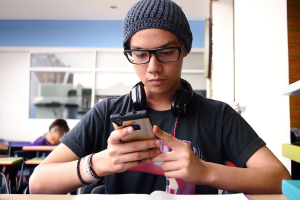- Java at 30: How a language designed for a failed gadget became a global powerhouse
- I've tested dozens of work laptops - but I'd take this Lenovo to the office everyday
- Avery Dennison takes culture-first approach to AI transformation
- 6 ways I save money on TV streaming without losing the shows I love
- It almost pains me to say it, but Microsoft Edge is great on Linux - you should try it
Digital Strategies to Safeguard Your Child from Upsetting and Violent Content Online | McAfee Blog

Amidst the recent heartbreaking events in the Middle East, parents now face the challenge of protecting children from the overwhelming amount of violent and disturbing content so easily accessible to children online.
Reports of unimaginable acts, including graphic photos and videos, have emerged on popular social networks, leading child advocates to call for heightened monitoring and, in some cases, the removal of these apps from children’s devices. According to a recent investigation by The Institute for Strategic Dialogue, the team adopted the personas of 13-year-olds to establish accounts on Instagram, TikTok, and Snapchat. During a 48-hour period spanning from October 14 to 16, the researchers unearthed over 300 problematic posts. Surprisingly, a significant majority of these problematic posts, approximately 78%, were discovered on Instagram, with Snapchat hosting about 5% of them.
In today’s digital age, the consensus is clear: keeping older children informed about global events is important. However, given the abundance of real-time, violent content, the urgency to protect them from distressing material that could harm their mental well-being has become even more imperative.
In such times, there isn’t a one-size-fits-all strategy, but we can provide valuable tips to help you monitor and minimize your child’s exposure to violent content.
10 Ways to Limit Your Family’s Exposure to Online Violence
- Safeguard Screen Time: It’s natural if you are anxious about your child’s exposure to online content right now. Listen to that inner voice and be proactive with all screen time including television. A practical approach is to limit device access. For younger children, consider using a family device instead of a personal one to manage screen time more effectively. Know where the remote is and explain why you are making changes.
- Get Serious about Parental Controls: Technology can be your ally during times of global crisis. Parental control features enable you to not only block inappropriate content but also regulate screen time. Consider apps that have built-in parental controls that can be customized to the age of your child and give you the added protection and peace of mind needed right now.
- Talk Openly and Honestly. Don’t be shy about engaging your child in open and honest conversations about what’s going on in the world right now. Chances are, they’re already getting the information anyway, or absorbing the stress anyway. Depending on age, explain the basics of the conflict and why it’s dominating the news and online conversations. Encourage your children to ask questions and share their thoughts and concerns.
- Monitor Their Digital Circles: Keep a watchful eye on your child’s online activities, especially during sensitive times when it’s unclear what kind of content they may see online. This includes online gaming platforms and messaging apps. Installing parental control software is important but so is listening to what and how your child (and his or her peers) posts, comments on, and shares.
- Zero in on Media Literacy: Propaganda and misinformation is rampant, especially in connection with a geopolitical conflict. Teach your children the art of critical thinking and challenge them to level up their media literacy. Help them discern the difference between reliable sources and disinformation campaigns. Teach them to how to question the information and opinions they encounter online.
- 6. Implement a Digital Detox: During periods of particularly distressing news coverage, urge your child to take breaks from the news and model that decision as well. Engage with them in alternative activities and hobbies that foster relaxation and well-being, balancing their online exposure.
- Family News Time: If age-appropriate, make watching the news a family affair. This practice allows you to explain and discuss what’s happening and address any questions or concerns your child may have in real-time.
- Empathy and Compassion: Foster discussions about the importance of empathy and compassion for those suffering due to conflicts. Encourage your child to engage in activities that promote understanding and kindness.
- Review Reporting Channels: If your child is online be sure they know how to report disturbing or inappropriate content on their favorite apps, games, or social sites. Most platforms have mechanisms for flagging or reporting such content, which empowers children to be active participants in online safety.
- Seek Professional Support if Needed: What’s happening in the world is distressing and can ignite confusion, fear, and anxiety in a child. Every child is unique so if you notice signs of distress, anxiety, or trauma due to exposure to violent online content, don’t hesitate to seek professional help from a therapist or counselor. Their expertise can be invaluable in times of need.
To wrap up, don’t lose sight of mental and physical well-being by implementing the strategies mentioned here. By setting a strong example of a balanced digital life and open communication about real-life crises, your children will naturally pick up on how to navigate the online world. Your actions speak volumes, and they will follow your lead.

